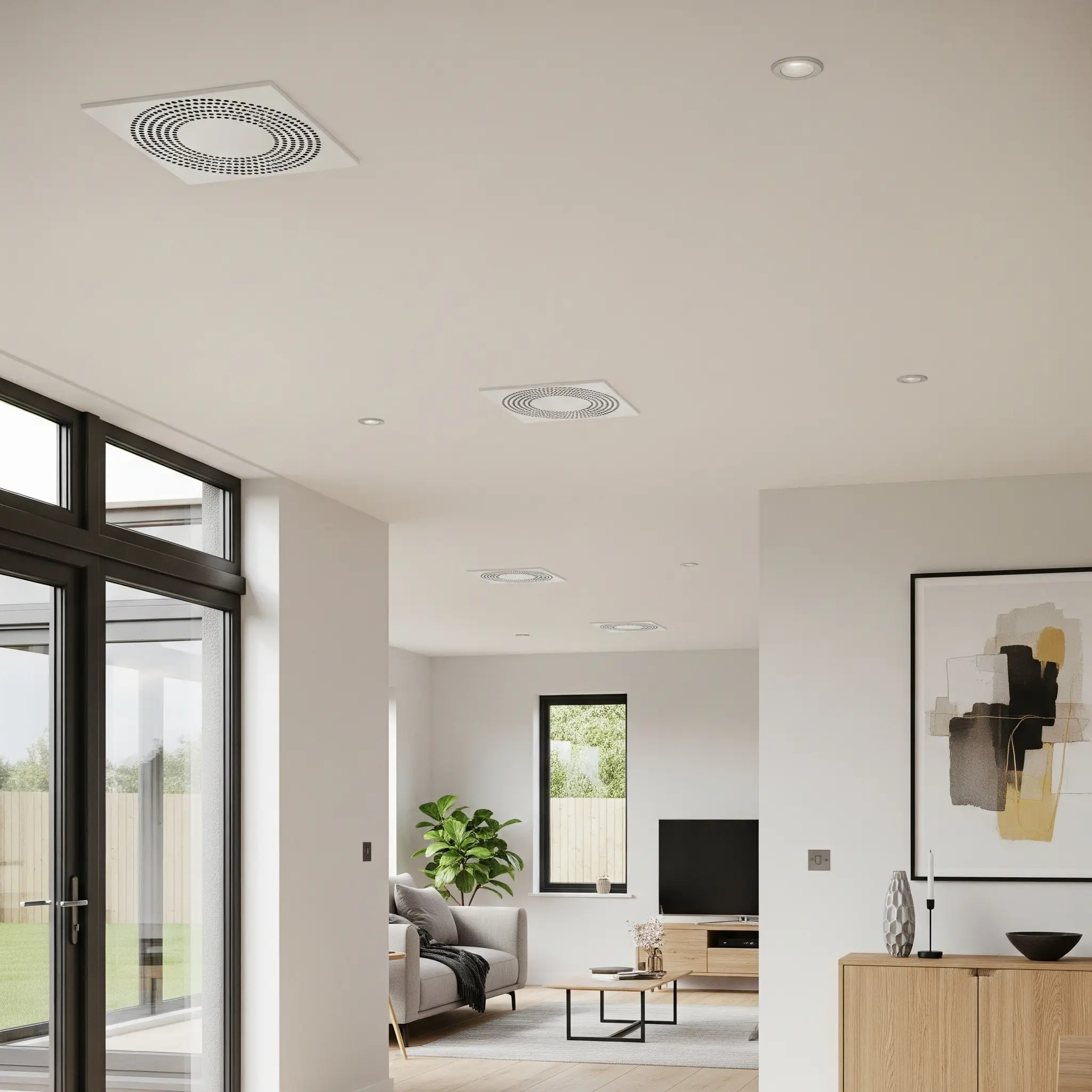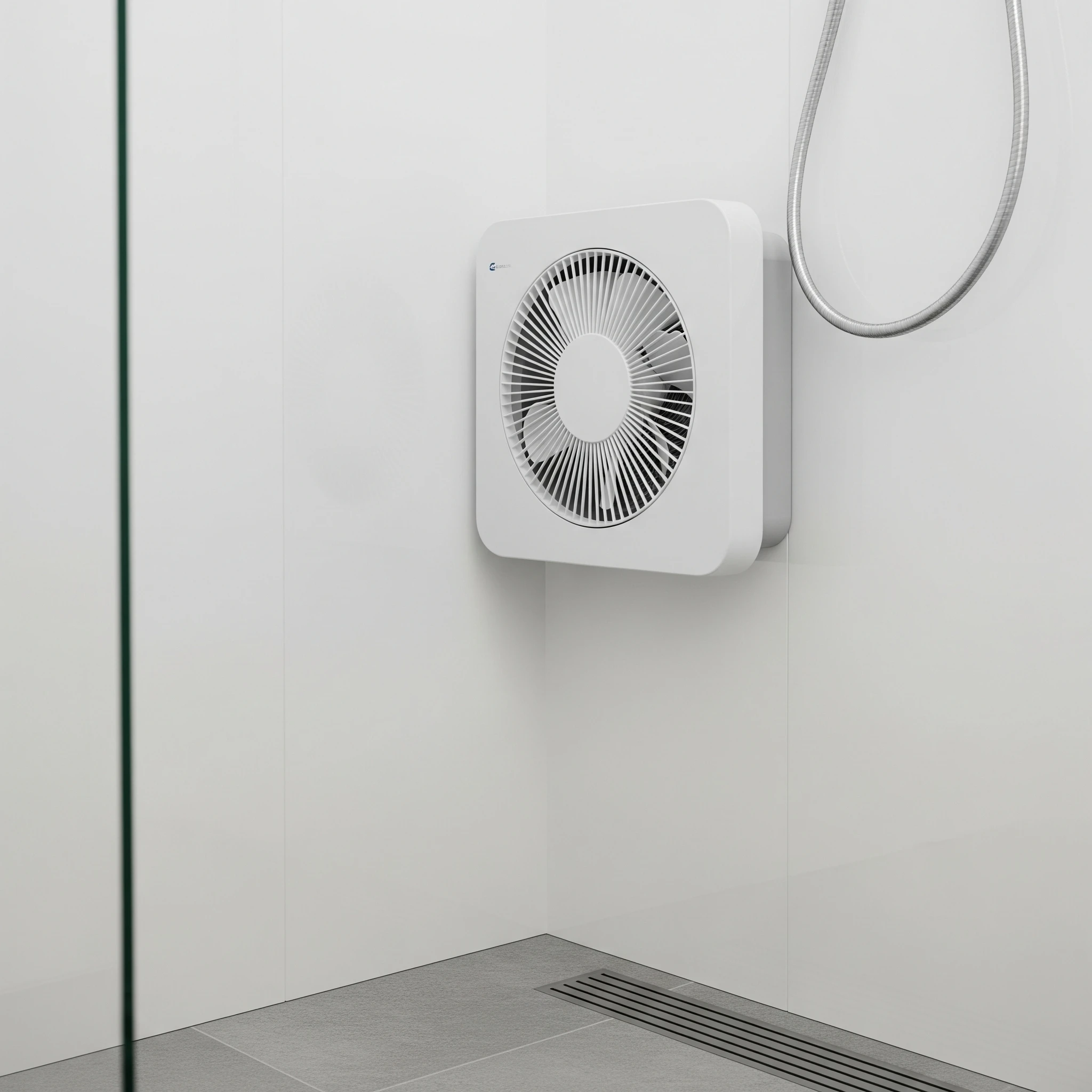Are you looking to improve the ventilation in your home? Extractor fans and kits are a great way to promote better airflow and ensure fresh, clean air throughout your space.
Maximising home ventilation with an extractor fan system involves a strategic approach to control moisture, pollutants, and stale air. This is crucial for maintaining good indoor air quality and preventing issues like condensation, mould, and lingering odours. It’s also a fantastic way to keep your space looking good!
Here at City Plumbing, we explore the benefits of using extractor fans and kits, while offering expert tips on how to choose the right one for your needs.
The Importance of Good Ventilation In The Home
Good ventilation is essential for maintaining a healthy indoor environment. Proper airflow helps to remove stale air, odours, and pollutants, while also reducing the risk of mould and mildew growth.
By using extractor fans and kits, you can ensure that fresh air is constantly circulating throughout your space, creating a comfortable and inviting atmosphere.
The Benefits of Extractor Fans and Kits
Extractor fans and kits offer a wide range of benefits for both residential and commercial spaces. Some of the key advantages include:
- Improved Air Quality: Extractor fans help to remove pollutants and allergens from the air, creating a healthier indoor environment.
- Reduced Humidity: Extractor fans can help to reduce humidity levels in bathrooms and kitchens, preventing mould and mildew growth.
- Odour Control: Extractor fans effectively remove cooking smells, bathroom odours, and other unwanted scents from the air.
- Energy Efficiency: By improving airflow and ventilation, extractor fans can help to reduce energy costs associated with heating and cooling.

How to Optimise Ventilation Throughout the Home
1. Identify Key Areas for Extraction:
- Bathrooms: Our bathrooms are primary sources of moisture from showers and baths. Proper extraction prevents condensation, mould, and mildew.
- Kitchens: Cooking generates smoke, grease, steam, and odours. Effective kitchen extractor fans remove these contaminants at the source.
- Utility Rooms/Laundry Rooms: Similar to bathrooms, these areas can produce significant moisture.
2. Choose the Right Type of Extractor Fan:
There are several types of extractor fans, each suited to different applications and ducting requirements:
- Axial Fans:
Most common for general domestic use.
Move air along the axis of the fan blade.
Ideal for shorter duct runs (up to 1.5-3 meters) and through-the-wall or window installations.
(Note: Can be noisier than other types)
- Centrifugal Fans:
More powerful, generating higher pressure.
Better for longer duct runs (e.g. in internal bathrooms or basements)
Generally quieter than axial fans.
(Note: Can be larger and more expensive choices)

- Mixed Flow Fans:
Combine aspects of axial and centrifugal fans, offering good airflow over longer distances.
Often a good balance of performance and noise level.
Common in inline fan kits, where the fan is installed in the loft or ceiling void, reducing in-room noise.
- Inline Fans:
Installed within the ductwork, often in a loft or ceiling void, away from the living space, which significantly reduces noise.
Can be axial, centrifugal, or mixed-flow.
Excellent for situations requiring longer duct runs.
3. Consider Ventilation Systems:
Beyond individual extractor fans, whole-house ventilation systems offer more comprehensive solutions:
- Intermittent Extraction: These fans operate on demand (e.g. switched on manually, via a pull cord, or triggered by a humidity sensor/timer) They're good for targeted removal of pollutants/moisture when needed. Most common in existing homes.
- Continuous Mechanical Extract Ventilation (CMEV/dMEV):
dMEV (Decentralised MEV): Individual fans in wet rooms (bathrooms, kitchens, utility rooms) run continuously at a low "trickle" speed to provide constant background ventilation. They can boost to a higher speed when needed (e.g. with a humidity sensor or manual boost switch) They're quiet and energy-efficient.
CMEV (Centralised MEV): A single, central fan unit typically in the loft extracts stale air from multiple wet rooms via ducting. Fresh air enters the home through background ventilation (e.g. trickle vents)
The most advanced option, common in new, highly insulated homes.
Extracts stale air and supplies fresh, filtered air, recovering heat from the outgoing air to warm the incoming air. This helps maintain a comfortable temperature while ventilating efficiently.
Can be centralised (serving the whole house) or decentralised (single-room units)
Retrofitting MVHR in existing homes can be costly and disruptive.
- Positive Input Ventilation (PIV):
A fan unit in the loft draws in fresh air (often from the loft space or via a roof vent) and gently introduces it into the home, creating a slight positive pressure.
This pushes stale, moist air out through existing gaps and background ventilation.
A more affordable and less disruptive alternative to full MVHR for existing homes, often used in conjunction with extractor fans in wet rooms.
4. Strategic Placement and Installation:
- At the Source: Always install extractor fans as close as possible to the source of humidity and pollutants (e.g. directly over or near the shower/bath, or above the cooker hob)
- High Up: Mount fans as high as possible, ideally near the ceiling (within 400mm) to effectively capture rising moist or polluted air.
- Opposite Air Ingress: Position the fan in the furthest wall, window, or ceiling from the door to ensure maximum airflow through the entire room, drawing in fresh air.
- Ducting is Key:
Shortest and Straightest Route: Plan the ductwork to be as short and direct as possible to the exterior vent (through the roof or wall) Long, convoluted duct runs reduce fan efficiency and can lead to condensation inside the ducting.
Duct Size: Ensure appropriate ducting size (e.g. 100mm/4" for most bathrooms, larger for kitchens or longer runs) Larger, smooth-bore rigid ducting is generally better than flexible ducting, especially for longer runs or with bends, as it reduces resistance.
Insulate Ducting: Insulate ducting in cold spaces (like lofts) to prevent condensation from forming inside the ducts, which can lead to drips and mould.
Proper Termination: Ensure exterior vents are correctly installed and prevent air from re-entering the property. Avoid venting directly under soffits, as this can trap moist air.
- Background Ventilation: To replace the extracted air and prevent negative pressure, ensure there is adequate provision for fresh air to enter the home. This can be achieved through:
Trickle vents: Small, continuously open vents usually found in window frames.
Undercut internal doors: Leaving a small gap at the bottom of internal doors allows air to move between rooms.
Internal grilles: In rooms without windows or with tightly sealed doors.
Air bricks/passive vents: In older properties, these can aid circulation.
5. Features to Look For in Extractor Fans:
- Extraction Rate (L/s or m³/hr): Ensure the fan has a sufficient extraction rate for the room size and type (e.g. minimum 15 L/s for bathrooms, 30-60 L/s for kitchens) Building regulations often specify minimum airflow rates.
- Noise Level (dB): Look for fans with low noise levels, especially for continuous running systems or in living areas.
- Humidity Sensors: Automatically activate the fan when humidity levels rise, ensuring efficient moisture removal.
- Timers: Allow the fan to run for a set period after being switched off, ensuring all moisture is cleared (especially useful after showers)
- Adjustable Speed Settings: Provides flexibility for different ventilation needs.
- IP Rating: Crucial for bathroom fans, indicating their protection against water ingress (e.g. IPX4 for splash-proof, higher for zones closer to water sources).
- Energy Efficiency: Look for fans with low specific fan power (SFP) ratings.
6. Maintenance:
- Regular Cleaning: Extractor fan filters and grilles can become clogged with dust and grease, reducing efficiency. Clean them regularly (every few months for kitchen fans, twice a year for bathroom fans)
- Replace Filters: If your fan uses charcoal pellets or other filters, replace them as recommended by the manufacturer.

Buy Extractor Fans and Kits at City Plumbing
City Plumbing offers a variety of extractor fans and kits to maximise ventilation in your home, particularly in bathrooms and kitchens.
With top brand names such as Airflow, Fire Angel, Wisk, and EBAC to name just a few, our essential products remain competitively priced to help you stay on budget.
Bathroom Extractor Fans & Fan Kits: Essential for removing moisture and odours, our bathroom extractor fans come in various styles and sizes to suit different applications.
Examples include in-line shower kits with timers and lights, and quiet axial fans with humidity sensors or timers, alongside flexible ducting & ducting kits.
Ventilation and Dehumidifiers: As well as extractor fans, we also stock essential accessories like vents, gravity and fixed grilles, cooker hood kits, and ducting accessories to complete your ventilation system.

Create a Comfortable Environment All Year Round with Good Ventilation
Extractor fans and kits are an effective and efficient way to maximise ventilation in any space. By choosing the right fan for your needs and following proper installation and maintenance procedures, you can enjoy improved air quality, reduced humidity, and energy savings.
So, upgrade your space with extractor fans and essential kits today for a healthier and more comfortable environment. By carefully considering these factors, you can design and implement an effective ventilation strategy that will promote better air quality and increased comfort in your home.
If you’re looking for helpful advice and suggestions on choosing the best products for your home, take a further look at our City Plumbing website for more information.




